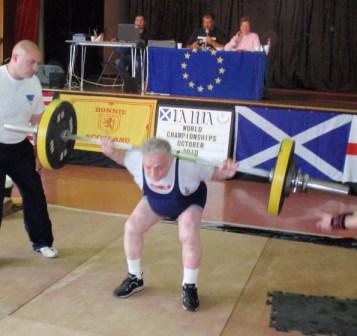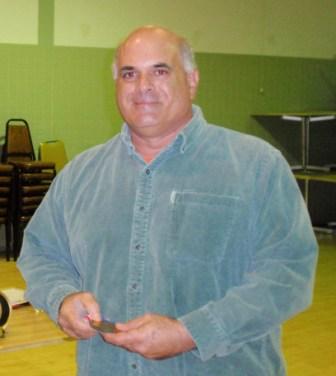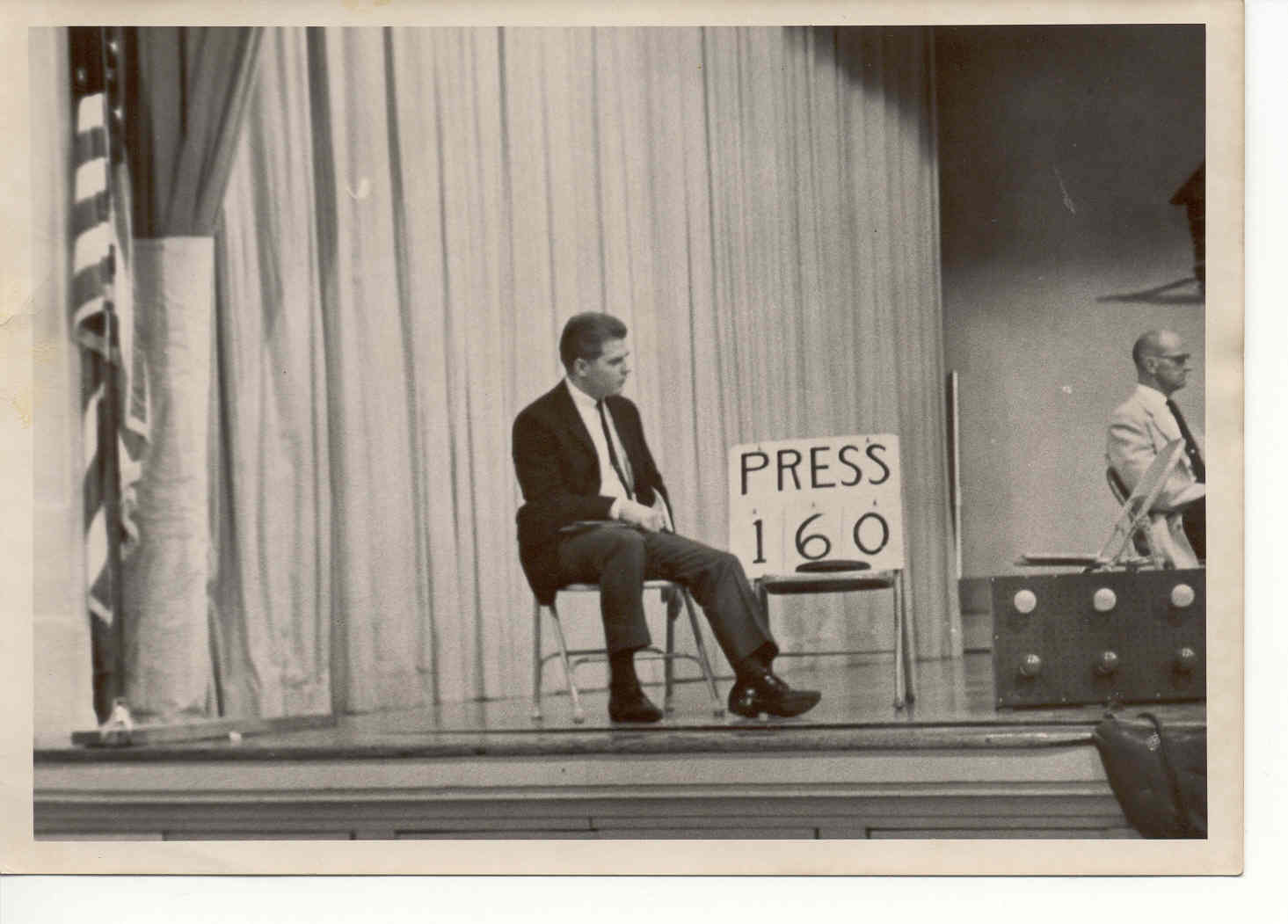by Al Myers
2010
IAWA WORLD CHAMPIONSHIPS RESULTS
CHAD ULLOM WORLD’S BEST LIFTER
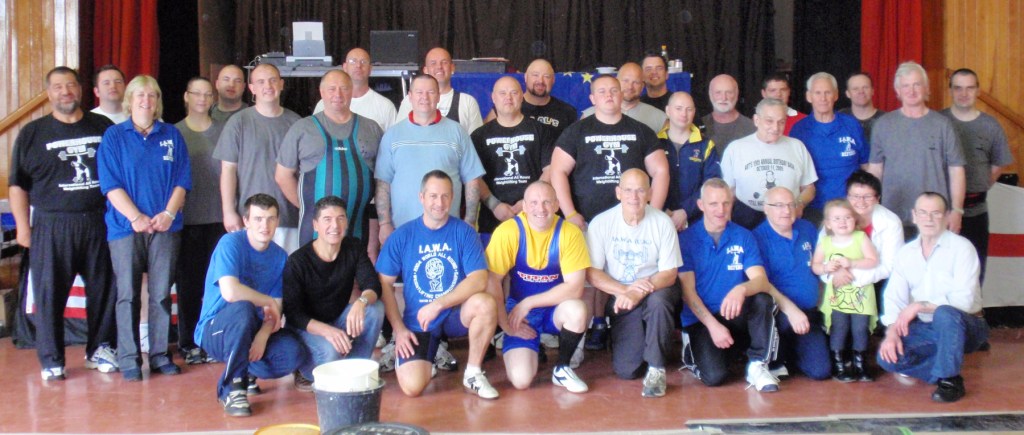
Group picture of the participants in the 2010 IAWA World Championships in Glasgow, Scotland.
Chad Ullom put together the perfect meet and captured this year’s most coveted prize in All-Round Weightlifting – Best Overall Lifter at the IAWA World Championships. Chad was in the best lifting shape he has ever been in and put up some HUGE LIFTS throughout the two days of lifting. On day one, he did the highest (poundage wise) Steinborn Lift in the USAWA Record List and tied the best in the IAWA Record List (with our IAWA President Steve Gardner) with a Steinborn Lift of 200 kilograms. It was a truly inspiration lift! He then did a 210 kg Continental to Belt, followed by the next day a Trap Bar Deadlift of 265 kilograms (his personal best). He also had the top Total of the meet, with a combined two-day poundage of 1015 kilograms. There was not a single event that Chad struggled with – he is a WELL-DESERVING CHAMPION!!!
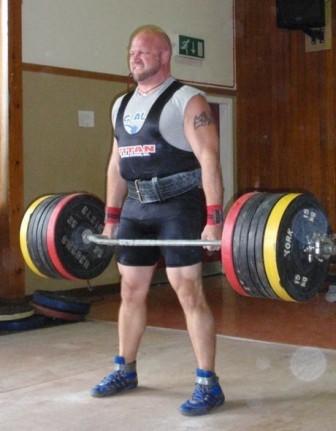
Chad Ullom pulls 265 kilograms (584 pounds) in the Trap Bar Deadlift on way to winning the Overall Best Lifter at the 2010 IAWA All-Round Weightlifting World Championships.
This was my second opportunity to compete in Glasgow, Scotland (the first being the 2006 IAWA World Championships). Both times I have been overly impressed with the meet, with credit going to Meet Director George Dick and the Castlemilk Gym crew. These guys are the BEST!! They deserve a “pat on the back” for a job well-done. I want to mention some of these guys – Willie Wright, Andy Tomlin, David McFadzean, and Matt Finkle. Your club unity really impressed me. That is what All-Round Weightlifting SHOULD be all about! I greatly appreciated the arrangements you made for all of us to meet the Provost at the formal reception Saturday night in the City Chambers. That is a memory that none of the lifters will ever forget.
Another highlight of the weekend was seeing our one-and-only Art Montini receiving the AWARD OF MERIT, an award specially given by IAWA President Steve Gardner, to recognize Art’s longtime commitment to the IAWA. This was the first-such award ever given and to a very WELL-DESERVING RECIPIENT (I will elaborate more on this in a future story). I also want to point out the outstanding performances by “the youngsters” in attendance. Robbie and Chris Hughes really impressed me with their lifting (especially their Trap Bar Deadlifts), along with Big Wade Smith, who was in the 125+ class at only 18 years of age! (And yes Wade – I noticed when you put up a bigger 1-Hand Dumbbell Press than me!!) I was glad to finally meet Mark Price. Mark is a newcomer to the All-Rounds and is a REAL POWERHOUSE, and he has to ability to be VERY SUCCESSFUL with a little more time. He did a very good Steinborn Lift of 150 kilograms, and squatted it with ease!! It was great to see Steve Sherwood back in action. Steve has had a long career in the IAWA, but he has been missing the past few years from International competition. Now Steve is 59 years old, but looks like he has not taken a day off from training in his entire life . He was VERY PROFICIENT in his lifting technique, and put up great lifts in everything. What can I say about Gerry Davidson?? (besides not being able to understand a word he says, lol). Gerry is 74 years old and solid muscle. He is a ferocious lifter on the platform, and gives every max lift 100%. He took a hard fall on the Clean and Push Press, but got up, brushed it off, and went back to lifting (it didn’t faze him!!). It was great to see Frank Allen back in action again after being sidelined last year with a hip replacement. He looked in great shape, and really surprised me with his 145 kilogram Continental to Belt. Dennis Mitchell has not missed many World Competitions, and again showed his grit, by setting MORE records on fourth attempts than anyone else in the entire meet (total 4). Denny Habecker was solid as ever, again making the top ten. It was great catching up with my old friends Steve Andrews and Roger Davis. These two have a WEALTH of information on All-Round Weightlifting and I learn something new with every visit with them. I HAVE to mention the outstanding lifting in the women’s division, with veteran Agnes McInally taking the overall honors.
I wish I had enough time to talk about EVERY LIFTER in the meet (I got stories on EVERYONE). I want to sum it up by saying – the lifting was superb, the meet was well organized, and a good time was had by all.
Men’s Top Ten
1. Chad Ullom, United States – 825.4 Points
2. Al Myers, United States – 809.0 Points
3. Steve Sherwood, England – 807.2 Points
4. Gerry Davidson, England – 806.6 Points
5. Steve Andrews, England – 777.6 Points
6. Roger Davis, England – 744.5 Points
7. Mark Price, England – 725.9 Points
8. James Gardner, England – 719.5 Points
9. Denny Habecker, United States – 713.8 Points
10. Robbie Hughes, Scotland – 680.9 Points
Women’s Top Three
1. Agnes McInally, Scotland – 577.3 Points
2. Nicola Hughes, Scotland – 480.4 Points
3. Kim Rawling, England – 356.5 Points
MEET RESULTS
Dates: October 2nd and 3rd
Location: Castlemilk Gym, Glasgow, Scotland
Meet Director: George Dick
M/C Recorder: Steve Gardner
Assistants: Judy Habecker and Chris Bass
Drug Testing: Frank Allen
Referees: Andy Tomlin, Chad Ullom, James Gardner, Mathew Finkle, Steve Andrews,Dennis Mitchell, Denny Habecker, Bill Wright, Chris Ross, Gerry Davidson, Frank Allen, Karen Gardner, David McFadzean
Lifts:
Day 1: Clean and Push Press, Barbell Snatch – One Arm, Continental to Belt, Steinborn Lift
Day 2: Cheat Curl, Dumbbell Press – One Arm, Trap Bar Deadlift
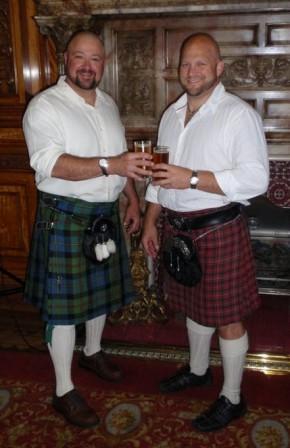
Chad and I donned our kilts and made a toast to show our spirit of celebrating the Championships in Scotland.
Best Lifter Awards:
Best Junior Robbie Hughes (Sco)
Best Female Agnes McInally (Sco)
Best Open Lifter Chad Ullom (USA)
Best Master 40+ Al Myers (USA)
Best Master 45+ Mark Price (Eng)
Best Master 50+ Steve Andrews (Eng)
Best Master 55+ Steve Sherwood (Eng)
Best Master 60+ George Dick (Sco)
Best Master 65+ Denny Habecker (USA)
Best Master 70+ Gerry Davidson (Eng)
Best Master 75+ Denny Mitchell (USA)
Best Master 80+ Art Montini (USA)
BEST OVERALL LIFTER
1st Chad Ullom (USA)
2nd Al Myers (USA)
3rd Steve Sherwood (Eng)
Special Award: The IAWA Award of Merit, presented to Art Montini (for services to all round weightlifting) by IAWA President Steve Gardner
PDF of Meet Results:
World Champs 2010 Day1 World Champs 2010 Day2 World Champs 2010 Both Days
